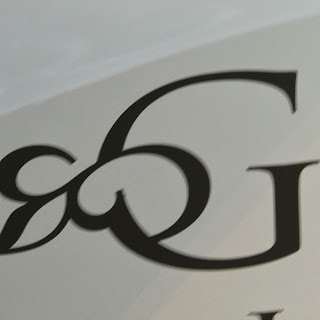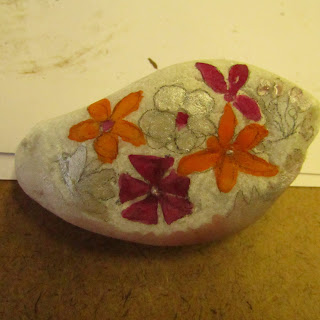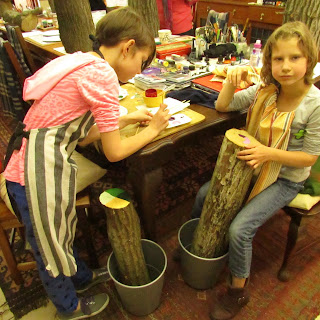Because of our exhibition coming up in November, I am on the look out to show various projects to illustrate how versatile calligraphy is.
From writing with pen-nibs, brushes and sticks, fine letters can be created in a great variety of ways.
This week we have been writing on fabric. Here are a few ideas and tips.
Materials: Fabric: Canvas, Calico
Square paint brushes, acrylic paint,
pencils, layout paper
Plan design on a
sheet of paper of similar size to the fabric.
For THIS exercise
use words to do with peace or creativity
Vrede, Patz, Frio, Salaam, Pace, Friede,
Kgotso, Paz, Shalom, Shanti, Thayu, Pax
Create, Enjoy, Write, Breathe, sing,
think, enjoy, laugh,
Tips:
Always have a
scrap of the fabric you have chosen to test the paint
When using
acrylic always keep the paint wet and make sure that the paint is liquid enough
to glide onto the fabric, but not too wet to leave water marks.
Use the correct
size brush for size of letters
Use a simple
hand: Uncial, Skeleton Romans, Neuland
Try out fabric
kokis, pencil crayons
Write
directly onto the fabric after your design has been chosen. If you use acrylic
add a ‘liquid medium’ to allow the paint to spread more smoothly.
Choose a
calligraphy marker designed for fabric or a permanent marker with a calligraphy
tip. A standard calligraphy tip is broad, with a fine edge.
Use a
calligraphic brush and fabric paint. This method requires a sure hand and some
practice.
You could use a
foam paintbrush with a fine edge. Hold the paintbrush at an angle, as you would
a calligraphy pen.
Dip the brush in paint and move with the same strokes you would employ in writing. Remember that foam brushes absorb a lot of paint: use a light touch to avoid squeezing excess paint onto your design.
Use a symmetric design
Tina's off centre, though balanced design
Lyn's bold gratitude
Uncial dream
Ghita's peace
Above all… experiment and have FUN!















































